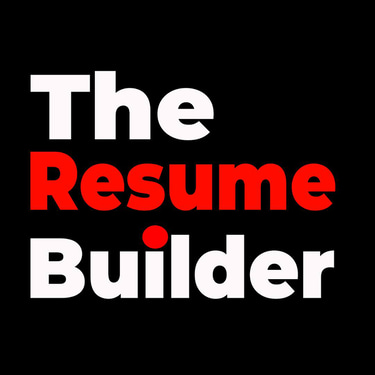HR Department Workflow Overview
A comprehensive guide to HR workflows and performance metrics, covering recruitment, onboarding, employee management, performance tracking, training, compensation, and essential HR KPIs to drive informed decision-making and workforce success.
Abhishek Kundu
7/18/20253 min read


1. Recruitment and Hiring
The recruitment journey begins when a department flags the need for a new hire. HR works closely with the team to understand the requirements and draft a clear, relevant job description. Once finalized, the opening is posted on internal and external platforms.
Applications are collected, sorted, and reviewed. Initial screening interviews are conducted by HR, typically over phone or video call. Shortlisted candidates are then passed to the relevant department for further interviews. Once the selection is made, HR prepares and issues the offer letter, followed by onboarding coordination to welcome the new joiner into the organization.
2. Onboarding New Employees
On the first day (and often before that), HR facilitates an orientation session to help new hires settle in. This includes sharing company policies, collecting necessary documents, and ensuring all legal and administrative steps are covered. A training schedule is developed in collaboration with the department, and HR keeps track of the probation period, offering support and feedback as needed.
3. Managing Employee Records
HR creates a digital record for every new employee and ensures it's regularly updated. This includes capturing changes in role, salary, and performance history. All records are securely stored in line with legal and regulatory guidelines, ensuring confidentiality and compliance.
4. Performance Management
HR plays a supportive role in performance management. This starts with helping managers and employees set meaningful goals. Regular check-ins are scheduled to track progress, with formal reviews typically held annually or semi-annually. If performance challenges arise, HR assists in developing improvement plans that are clear, supportive, and structured.
5. Employee Development and Training
HR helps identify training needs through feedback, appraisals, and role-based assessments. Relevant programs are designed or sourced externally and delivered in collaboration with internal teams or trainers. After each session, feedback is gathered to understand how effective the training was and what could be improved.
6. Employee Relations
HR is often the first point of contact when conflicts arise—whether between colleagues or involving management. The goal is always to find a fair and constructive solution. In addition, HR is responsible for keeping workplace policies up to date and managing any disciplinary matters respectfully and within policy guidelines.
7. Compensation and Benefits
Payroll, salary adjustments, and benefits such as insurance or retirement plans are managed by HR. Accuracy, timeliness, and legal compliance are top priorities to ensure every employee is fairly compensated and supported.
8. Employee Exit Process
When someone leaves the organization—either through resignation or termination—HR manages the exit process. This includes conducting an exit interview, arranging the final settlement, and closing the employee’s file. The focus is on making the transition as smooth and respectful as possible for all involved.
Key HR Metrics and What They Tell You
Here are some useful metrics HR teams often rely on to assess organizational health and guide decision-making:
Turnover rate
(Number of people who left ÷ average number of employees) × 100
A high turnover might suggest issues with engagement or culture.
2. Employee engagement rate
(Engaged employees ÷ total employees) × 100
Gives a sense of how invested people feel in their work.
3. Time-to-hire
(Total days taken to fill a role ÷ number of hires)
Helps understand how efficiently recruitment is moving.
4. Cost-per-hire
(Total recruitment costs ÷ number of hires)
Useful for planning and optimizing the hiring budget.
5. Absence rate
(Total days of absence ÷ total workdays) × 100
Can reveal trends in attendance or potential wellbeing concerns.
6. Training ROI
((Benefits from training − training cost) ÷ training cost) × 100
Measures whether the investment in training is paying off.
7. Retention rate
(Number of employees who stayed ÷ total employees) × 100
A high retention rate is usually a good sign of employee satisfaction.
8. HR-to-employee ratio
(Number of HR staff ÷ total employees)
Helps gauge if HR is adequately staffed to support the business.
9. Revenue per employee
(Total company revenue ÷ total number of employees)
A productivity measure useful for leadership and finance.
10. Employee satisfaction rate
(Satisfied employees ÷ total employees) × 100
Often based on survey results, it reflects morale and engagement.
11. Talent acquisition cost
(Recruitment costs ÷ number of hires)
Gives insight into how expensive it is to bring in new talent.
12. New hire turnover rate
(Departures of new hires ÷ total new hires) × 100
If high, it could point to issues in onboarding or hiring fit.
13. Diversity ratio
(Number of diverse employees ÷ total employees)
A helpful indicator of inclusion efforts.
14. Average employee tenure
(Total years of service ÷ number of employees)
Offers insight into organizational stability and loyalty.
These metrics aren’t just numbers... they offer real insight into what’s working, where to improve, and how HR can better support people and the business as a whole.
Expert in
Professional Resume Writing Company in Kolkata, West Bengal
Professional Resume Writer in Kolkata, West Bengal
ATS Resume Writing in Kolkata, West Bengal
GET IN TOUCH
theresumebuilderindia@gmail.com
+91 89813 60947
© 2015. All rights reserved by Abhishek Kundu Resume Writing Co.
abhishek@atsresumewriting.in
